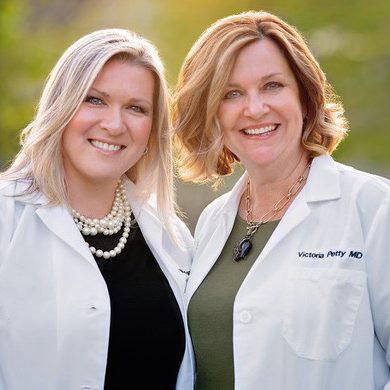Uterine fibroids are non-cancerous growths of muscular tissue that form in the uterine wall. They can occur as a single growth or several can form at one time. Fibroids can vary in size, ranging from as small as an apple seed to as large as grapefruit. In some cases, larger fibroids can put pressure on the surrounding abdominal organs. There are different types of fibroids, including:
Intramural
Intramural fibroids are the most common type of fibroid and are characterized by growth within the muscular wall of the uterus. They can grow large and can cause the uterus to stretch as they grow.
Subserosal
Subserosal fibroids form on the outside of the uterus (serosa) and can become large enough to make the uterus appear larger on the affected side.
Pedunculated
Pedunculated fibroids are subserosal fibroids that develop a stem to support themselves and hang off of the uterus.
Submucosal
Submucosal fibroids extend into the endometrial cavity and can result in abnormal bleeding.
Did You Know?
According to the U.S. Department of Health’s Office of Women’s Health, as many as 80% of women have uterine fibroids by the age of 50. However, many women are unaware they have fibroids because they do not always cause symptoms.
Frequently Asked Questions:
Do I have uterine fibroids?
While uterine fibroids can only be diagnosed by your gynecologic provider, you may be affected by fibroids if you experience any of the following:
- Heavy bleeding between or during your periods with blood clots
- Feelings of pressure or fullness in the lower abdomen
- Pain during intercourse
- Pain in the pelvis or lower back
- Increased menstrual cramping
- Swelling or enlargement of the abdomen
- Prolonged menstruation
To be evaluated for uterine fibroids, schedule an appointment with Bucks County Women’s Wellness today.
How do gynecologists at Bucks County Women’s Wellness diagnose uterine fibroids?
At Bucks County Women’s Wellness, our providers will first ask you about your symptoms and medical history. We will then perform a pelvic exam to assess the shape, size, and condition of your uterus. In some cases, additional diagnostic testing may be needed such as an ultrasound and/or pelvic MRI. Both diagnostic imaging methods allow our gynecologists to visualize your internal anatomy to determine if fibroids are present and how they may be affecting the surrounding organs.
How do gynecologists at Bucks County Women’s Wellness treat uterine fibroids?
At Bucks County Women’s Wellness, we offer a variety of treatments to treat uterine fibroids. Your exact treatment will depend on a number of factors, such as your age, the size of your fibroids, your symptoms, and your overall health. Here are some common treatments for uterine fibroids:
- Medications to regulate hormone levels and shrink fibroids
- Medications to control bleeding and pain
- Surgery to remove very large or multiple fibroids (myomectomy)
- Ultrasound surgery, which uses high-frequency sound waves to destroy fibroids
- Hysteroscopic surgery
- Endometrial ablation
- Uterine artery embolization
- Hysterectomy



